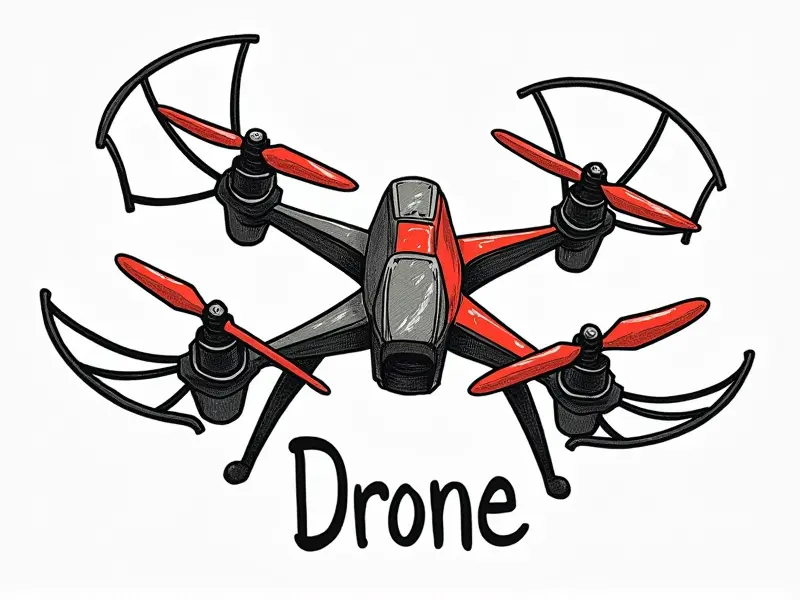Best Li-Po cell count for racing

Best Li-Po Cell Count for Racing
In the world of FPV (First Person View) racing and drone flying, choosing the right Li-Po cell count is crucial. The number of cells in your battery directly impacts speed, flight time, power delivery, and overall performance. This article delves into the nuances of 4S vs 6S batteries to help you make an informed decision.
4S vs 6S: Which LiPo Cell Count Wins in Racing?
The age-old debate between 4S and 6S batteries revolves around balancing power, efficiency, and performance. A 4S battery offers a lower voltage (14.8V) compared to a 6S battery (22.8V), which can affect motor RPMs and overall speed.
For FPV racing drones, the choice often comes down to personal preference and specific race conditions. A 4S setup provides better efficiency and longer flight times, while a 6S setup delivers higher speeds and more aggressive performance.
Optimal Cell Count for FPV Racing Drones
The optimal LiPo cell count for FPV racing drones depends on the frame design and motor specifications. Mini frames typically benefit from 4S batteries due to their lower power requirements, while larger frames may require more cells to achieve maximum performance.
Best Li-Po Cell Count for Drone Speed
To maximize speed in FPV racing, a higher cell count is often preferred. A 6S battery can provide the necessary voltage and current to push motors harder and achieve faster speeds. However, this comes at the cost of reduced flight time.
Max Power in Mini Frames: LiPo Choice
Mini frames are designed for agility and maneuverability rather than raw speed. A 4S battery is usually sufficient to deliver optimal performance while maintaining a balance between power and efficiency.
Lipo Cells: Finding the Sweet Spot
Finding the sweet spot in LiPo cell count requires understanding your drone's capabilities and desired flight characteristics. Experimenting with different setups can help you identify the best configuration for your specific needs.
Choosing Between 4S and 6S Batteries
The decision between a 4S and 6S battery hinges on several factors:
- Flight Time: A 4S battery typically offers longer flight times due to its lower power consumption.
- Speed: A 6S battery can deliver higher speeds but at the expense of shorter flight durations.
- Power Delivery: Higher cell counts provide more voltage and current, which is crucial for powerful motors and ESCs (Electronic Speed Controllers).
The Impact of 3S vs 4S Batteries on Race Performance
Moving from a 3S to a 4S battery can significantly enhance race performance by increasing motor RPMs and overall speed. However, the improvement is less pronounced when upgrading from 4S to 6S due to diminishing returns.
FPV Racing: Why 4S Over 6S?
In many cases, a 4S battery offers better performance for FPV racing drones:
- Better Efficiency: Lower voltage and current requirements lead to more efficient power usage.
- Longer Flight Time: Extended flight durations allow pilots to push harder without worrying about running out of battery.
- Agility: 4S batteries enable better maneuverability, which is crucial in tight race courses.
Cell Count Conundrum in FPV Racing
The cell count conundrum arises from the trade-offs between speed and efficiency. While a higher cell count can boost performance, it also shortens flight time and increases power consumption. Pilots must weigh these factors to find their ideal setup.
LiPo Cells for Ultimate FPV Performance
To achieve ultimate FPV performance, consider the following:
- Frame Design: Optimize your frame and motor selection based on the intended cell count.
- Battery Capacity: Choose batteries with sufficient capacity to support extended flight times without compromising power delivery.
- Tuning: Fine-tune your ESC settings and propeller size to maximize efficiency at your chosen voltage level.
Balancing Power and Efficiency with LiPo Cell Count
Striking a balance between power and efficiency is key to achieving optimal performance in FPV racing. Experimenting with different cell counts, frame designs, and tuning parameters can help you find the best configuration for your needs.
Conclusion
The choice of Li-Po cell count for FPV racing drones is a critical decision that impacts speed, efficiency, and overall performance. While 6S batteries offer higher speeds, a 4S setup provides better efficiency and longer flight times. Ultimately, the best solution depends on your specific requirements and preferences.

